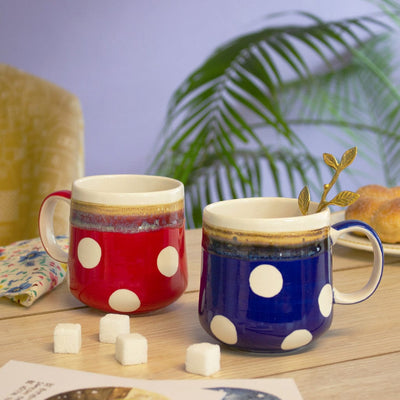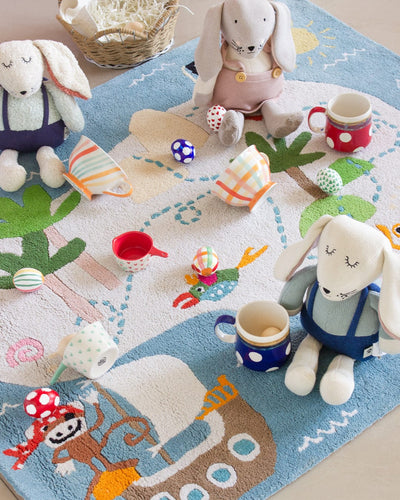Do constraints cancel creativity? : The Delights of Distraction No.94
Table of contents
There are only 50 unique words in the children’s book Green Eggs and Ham. Dr. Seuss wrote the book after his publisher bet him $50 in 1960 that he couldn’t write an entire book with less than 50 unique words (for context, an average novel has about 7,500 unique words.) Not only did he manage to produce a piece of writing that was coherent, it went on to sell millions of copies, and 60 years later, is lauded as a beloved children’s classic.
Constraints, arbitrarily administered by the forces of the universe beyond our control - can seem stifling, and unfair; like running a relay race with your ankles tied together. But constraints can be powerful; they make us resourceful, creative, and more appreciative of the things that we are now denied.
About two months ago, our landlord in Gurgaon informed us that he would be selling our store-space, so we had to “haul ourselves outta there”. Luckily we managed to quickly secure the last available “To let” store in the same mall, giving us a runway of about a couple of months to move.
But there were issues. The new store space was half the size of our original store. Which meant we had to bid farewell to The Mad Teapot cafe. It was also built like a train bogey: long and narrow. We are approaching festive season, sampling and buying inventory, so we had no funds left over for fancy interior flourishes. We wanted to make the move as frugally as possible, so we kept the flooring, and decided to recycle all the furniture from the old store, including the lights and ducting. But we had to do all this within a short turnaround time, so we wouldn’t lose too many retail days.
The result? A bright, minimal, edited store where the product is the hero.
We suspected that the constraints we faced would hold us back, make us smaller - but instead it was an invitation to re-examine our priorities. It made us more decisive and nudged us into being laser-focused on creating customer delight through product design and quality.
Do come visit us if you’re in the NCR area; we have soft-launched right now, but officially launch in September. And although we have shut our cafe for good - for you, we still have coffee :)
Here’s a round-up of our favourite links and reads of the week:
To live by: We love lists of rules and lessons learned by various top thinkers and writers in their field, even though some of them can seem trite and simplistic, there’s always a little pearl of wisdom to be gleaned from some of the insights distilled into listicles. Dru Riley has put together a list of 100 useful rules for making life more rewarding. Here are some samples:
“Read and listen to whatever you’re most interested in.” — We get more out of what interests us. Find something that you enjoy reading instead of struggling through books.
“IDK = No” — If you’re uncertain, the answer should probably be no.
“Price affects risk.” — If an experiment is cheap, just do it. The more the price goes up, the more you should reconsider.
“Our brains are built to enjoy stories.” — Stories help information stick.
To joy scroll: This weekend, our part of the world was celebrating Janmashtami - the birth of Krishna. Devotees celebrate the festival in numerous ways: popular scenes of Krishna’s birth and childhood are enacted through songs and ballads. In neighbourhoods (especially in Maharashtra), pots of milk are hung from tall poles, and boys form human pyramids – attempting to reach the pot and break it, as an imitation of Krishna’s favourite sport with the cowherd boys.
Krishna has been a powerful and fascinating muse for Indian artists and writers for centuries, but when we came across the 14th century poet, Vidyapati’s verses, our curiosity was particularly piqued. The Krishna-Radha love story is composed into 100 love songs, and is narrated with Radha as the protagonist - how refreshing! Read more about this tender celebration of the many nuances of Radha’s love as she negotiates her relationship with her God-paramour.
An excerpt:
Tomorrow
He left me saying he would be back tomorrow.
I’ve covered the floor of my home
Writing: Tomorrow.
When dawn came, they all enquired:
Tell us, friend,
When will tomorrow come?
Tomorrow. Tomorrow, I gave up my hopes,
My beloved never returned.
Says Vidyapati, listen, beautiful one,
Other women held him back.
To WTF: In the Victorian era, people liked to send postcards referred to as vinegar valentines - so-called because the message they conveyed was the opposite of sweet. These were often simply rejection letters, but others contained poems that took personal jabs at the appearance or intellect of the recipient.
A sample:
My valentine:
Tis a lemon that I hand you And bid you now
"skidoo!”
Because I love another
There is no chance for you!
Yikes! And here we thought Tinder was harsh - the Victorians were brutal!
To watch: Alain de Botton narrates a charming all-wool animation made for School Of Life, explaining how and why introverts need time alone in order to enjoy time with other people.
To play: An AI-powered app that enables you to paint music. Appropriately named “Paint With Music”, this free web-based app from Google transforms doodles into music based on its visual form. It’s playful, quirky and perfect fun for kids.
To cook: Food science guru Adam Ragusea dives deep into the chemical nature of foods, such as what happens with smoking meat at the molecular level, why fennel and liquorice taste the same, or what is the chemical that makes the smell of rain. But also definitively answers many useful questions like “do the eggs of happy chickens taste better?” He references obscure scientific journals, does his own experiments, and mixes in delicious recipes you can follow yourself. We highly recommend this particular recipe for fudgy, chewy brownies. The secret ingredient? Condensed milk. Ragusea explains why.
To quote: “But human beings do not perceive things whole; we are not gods but wounded creatures, cracked lenses, capable only of fractured perceptions. Partial beings, in all the senses of that phrase. Meaning is a shaky edifice we build out of scraps, dogmas, childhood injuries, newspaper articles, chance remarks, old films, small victories, people hated, people loved; perhaps it is because our sense of what is the case is constructed from such inadequate materials that we defend it so fiercely, even to the death." - Salman Rushdie
To life hack: Here’s a shorthand rule of thumb to help decision-making. This one has been especially helpful to us when hiring talent and assessing who is most likely to have more grit and persevere through challenges. It’s called : Taleb’s “Look the Part” Test. Nassim Nicholas Taleb famously proposed this rule of thumb in his best selling book, Skin in the Game.
He talks about choosing between two surgeons of equal qualification and experience. One looks highly-refined and one looks like a butcher.
"Simply the one who doesn’t look the part, conditional of having made a (sort of) successful career in his profession, had to have much to overcome in terms of perception." Generalizing the rule: if forced to choose between two options of seemingly equal merit, choose the one that doesn’t look the part.The one who doesn’t look the part has had to overcome much more to achieve its status than the one who fit in perfectly.
To end:
“Green Apples” by Ruth Stone
In August we carried the old horsehair mattress
to the back porch
and slept with our children in a row.
The wind came up the mountain into the orchard
telling me something:
saying something urgent.
I was happy.
The green apples fell on the sloping roof
and rattled down.
The wind was shaking me all night Long,
shaking me in my sleep
like a definition of love,
saying, this is the moment,
here, now.
Wishing you a busy & fulfilling week,
Viv and Ami







Leave a comment